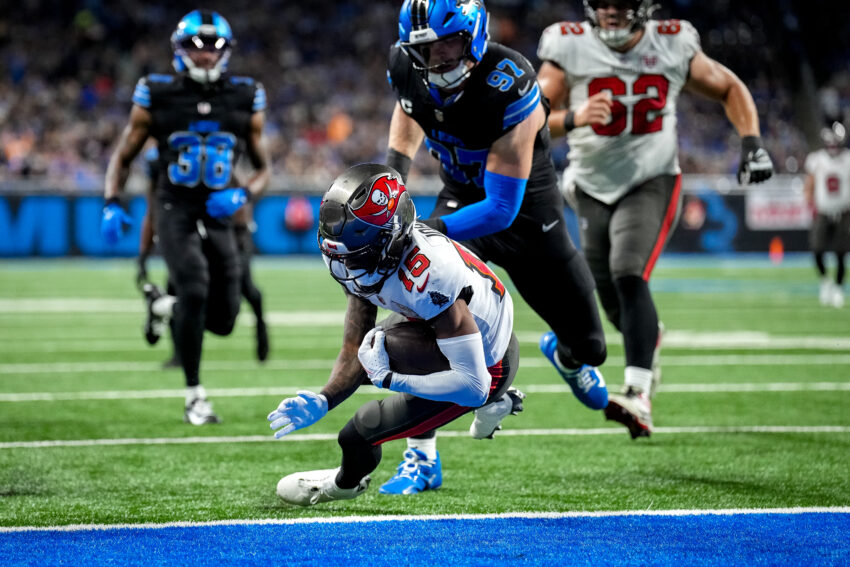
sports streaming is a fragmented hot mess Former NFL star JJ Watt’s frustration with the current state of sports streaming highlights the growing discontent among fans regarding access to live sports.
sports streaming is a fragmented hot mess
The Current Landscape of Sports Streaming
Sports streaming has become a complex and fragmented ecosystem, with various platforms vying for exclusive rights to major sporting events. This fragmentation has led to a confusing experience for viewers, who often find themselves navigating multiple subscriptions and services to catch their favorite teams in action. The recent dispute between Disney and YouTube TV is just one example of the challenges facing sports fans today.
JJ Watt’s Frustration
On October 30th, 2023, JJ Watt took to X (formerly Twitter) to express his discontent with the situation. The former Houston Texans player, who has a significant following, tweeted, “Just frustrating. All of it.” His comments resonated with many fans who have experienced similar frustrations with the ongoing carriage dispute between Disney and YouTube TV, which resulted in ESPN and several other Disney-owned networks going dark on the platform.
The Disney-YouTube TV Dispute
The dispute between Disney and YouTube TV is emblematic of a larger trend in the sports streaming industry. Carriage disputes occur when content providers and distributors cannot agree on the terms of their partnership, often leading to blackouts of popular channels. In this case, Disney’s decision to pull ESPN from YouTube TV has left many subscribers scrambling for alternatives.
This blackout not only affects casual viewers but also avid sports fans who rely on ESPN for live coverage of major events, including NFL games, college sports, and more. The timing of this dispute is particularly unfortunate, as it coincides with the peak of the NFL season, when viewership typically reaches its highest levels.
The Fragmentation Problem
The sports streaming landscape is characterized by a multitude of services, each with its own exclusive content. This fragmentation creates a challenging environment for consumers, who must often subscribe to multiple platforms to access all the games and events they wish to watch. Some of the major players in the sports streaming arena include:
- ESPN+ – Offers exclusive access to certain live events, including UFC fights and college sports.
- Amazon Prime Video – Secured rights to Thursday Night Football, providing a unique viewing experience for its subscribers.
- Peacock – NBC’s streaming service that features Premier League soccer and other sports content.
- Paramount+ – Home to NFL games and UEFA Champions League matches.
- Apple TV+ – Recently entered the sports streaming market with Major League Soccer (MLS) rights.
This list is by no means exhaustive, as new services continue to emerge, further complicating the landscape. As a result, fans may find themselves paying for multiple subscriptions, leading to increased costs and frustration.
Consumer Reactions
The reaction from consumers has been overwhelmingly negative. Many fans express their dissatisfaction on social media platforms, echoing Watt’s sentiments. The frustration stems not only from the financial burden of multiple subscriptions but also from the inconvenience of navigating different platforms to find live sports content. Some fans have resorted to sharing login credentials with friends and family to mitigate costs, while others have turned to illegal streaming options, risking legal repercussions.
Moreover, the lack of a unified platform for sports streaming has led to a sense of disconnection among fans. Many feel that they are missing out on crucial moments in their favorite sports due to the inability to access specific games or events. This disconnection can diminish the overall viewing experience, as fans are unable to engage with their teams and fellow supporters in real-time.
Implications for the Future of Sports Streaming
The ongoing disputes and fragmentation in sports streaming have significant implications for the future of how fans consume sports content. As traditional cable subscriptions decline, streaming services are becoming the primary means of accessing live sports. However, the current model may not be sustainable in the long run.
Potential Solutions
To address the challenges posed by fragmentation, several potential solutions could be explored:
- Bundled Services: Streaming platforms could consider offering bundled packages that include multiple sports channels. This would allow fans to access a wider range of content without the need for multiple subscriptions.
- Unified Platforms: The creation of a single platform that aggregates all sports content could simplify the viewing experience for fans. This platform could offer customizable options, allowing users to select their favorite sports and teams.
- Negotiation and Collaboration: Content providers and distributors must engage in constructive negotiations to avoid carriage disputes. Collaborative efforts could lead to more favorable agreements that benefit both parties and, most importantly, the consumers.
Stakeholder Perspectives
Stakeholders in the sports streaming industry have varied perspectives on the current situation. Content providers, such as Disney, are focused on maximizing revenue from their sports properties, while distributors like YouTube TV aim to provide value to their subscribers. This often leads to conflicting interests that can result in blackouts and disputes.
Sports leagues and teams also have a vested interest in the outcome of these negotiations. They rely on broadcasting agreements to generate revenue and engage with fans. As the landscape evolves, leagues may need to reconsider their strategies for distributing content to ensure that fans have access to their games.
The Role of Technology
Technology plays a crucial role in shaping the future of sports streaming. Innovations in streaming technology, such as improved bandwidth and lower latency, can enhance the viewing experience for fans. Additionally, advancements in data analytics and artificial intelligence can provide personalized content recommendations, making it easier for fans to discover new sports and events.
Furthermore, the rise of social media platforms has changed how fans engage with sports. Live-tweeting during games, sharing highlights, and participating in discussions on platforms like X and Instagram have become integral parts of the sports viewing experience. This shift presents opportunities for streaming services to integrate social features into their platforms, fostering a sense of community among fans.
Conclusion
The current state of sports streaming is undoubtedly a “fragmented hot mess,” as JJ Watt aptly described. The ongoing disputes, coupled with the proliferation of streaming services, have created a challenging environment for fans seeking to access live sports. However, by exploring potential solutions and leveraging technology, stakeholders in the industry can work towards a more unified and consumer-friendly sports streaming experience.
Source: Original report
Was this helpful?
Last Modified: November 6, 2025 at 9:37 pm
3 views















